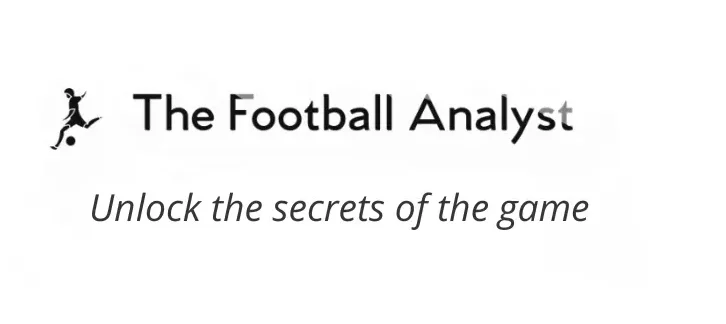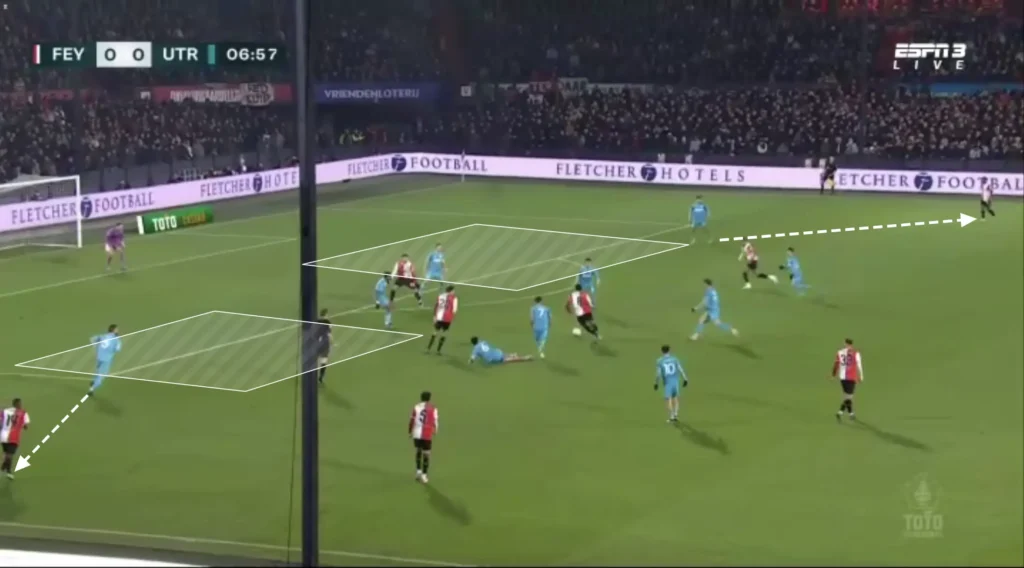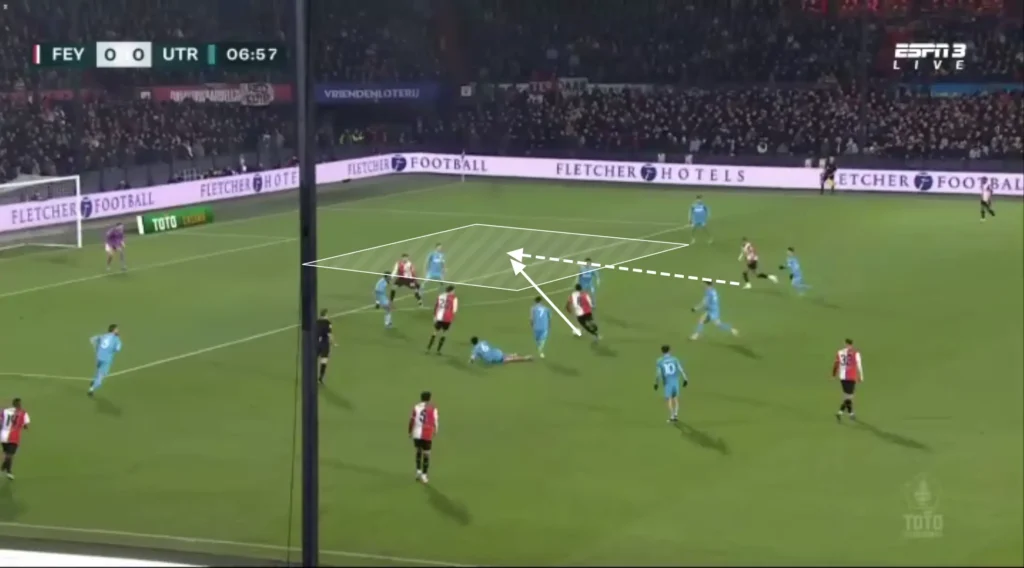In modern football, where compactness and defensive organization are paramount, creating and exploiting space is one of the greatest tactical challenges. One of the most effective and nuanced ways to do this is through pinning. Though it may not always be highlighted in traditional commentary or analysis, pinning plays a fundamental role in the positional dynamics of elite teams.
This article explores what pinning is, how it functions in different areas of the pitch, and why it is such a crucial tactical principle in the contemporary game.
What Is Pinning in Football?
Pinning refers to the deliberate positioning of attacking players to occupy or constrain defenders, making it difficult for them to leave their zones, step out to press, or support other parts of the defensive structure. By fixing defenders in place, pinning limits their ability to shift or compress space elsewhere, thereby creating openings for teammates.
While the action of the pinning player may seem static, its impact is dynamic. Pinning manipulates the defensive block, stretches its shape, and helps create superiorities (numerical, positional, or qualitative) in key areas. It’s often most visible when a striker holds the line against center-backs or when wide players stay high and wide to stretch a back four.
The success of a team’s positional play frequently hinges on the effectiveness of its pinning structures.
Types of Pinning
Pinning can take on several forms depending on where and how it is applied within a team’s tactical setup.
Horizontal
This occurs when attackers, especially wingers or fullbacks, maintain wide positions to prevent the opposition from narrowing their shape. By pinning the fullbacks or wide midfielders, they force the defensive block to stay spread, which creates space in the half-spaces or central zones for teammates to exploit.
Horizontal pinning is crucial for creating lanes between the lines, allowing interior players to receive the ball on the half-turn or for central overloads to develop.
Vertical
This involves players—usually strikers or advanced midfielders—positioning themselves close to the last line of defense to prevent center-backs from stepping out of the defensive line. Vertical pinning ensures that the opposition cannot compress the space in front of their backline, which in turn provides deeper midfielders and playmakers with more room to operate.
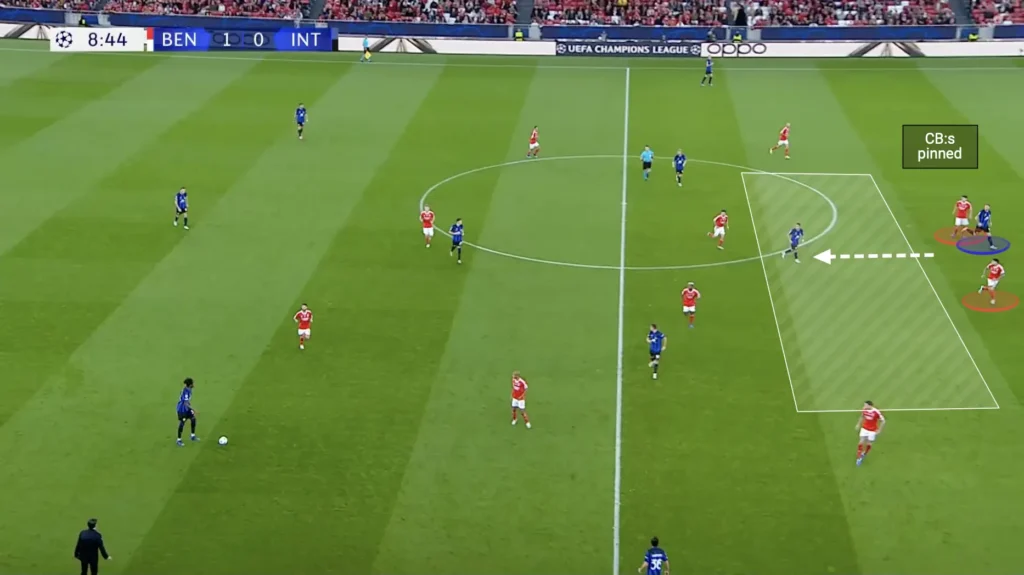
This type of pinning is particularly useful in structured build-up play or when the attacking team is looking to break lines through vertical passes.
Dynamic Through Counter-Movements
Midfielders or wingers may make threatening runs in behind the defensive line, forcing defenders to drop deeper to cover the space in behind. If the defenders track the run, they leave space between the lines. If they hold their shape, the runner may become a direct threat, stretching the defensive block vertically.
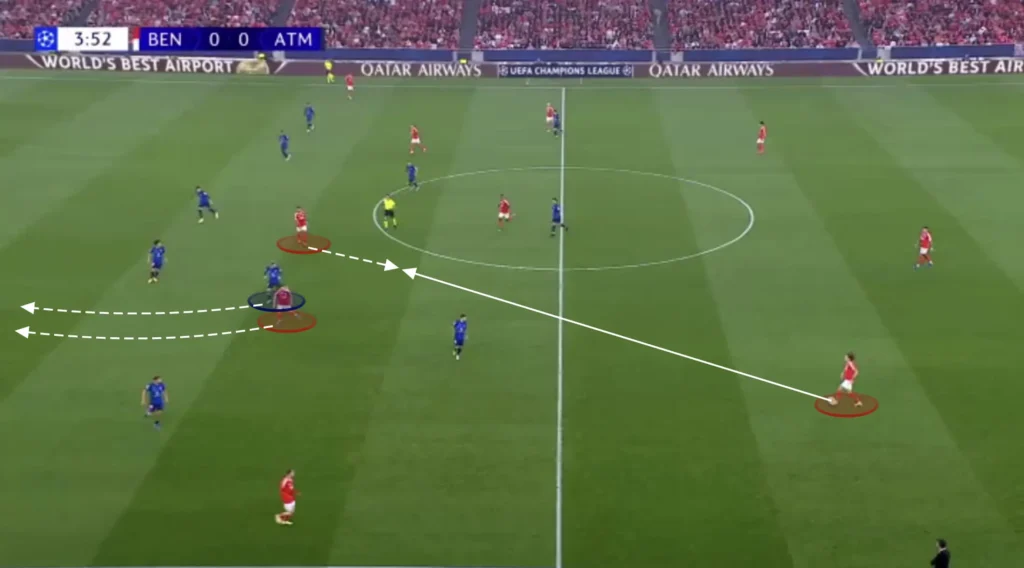
This form of pinning is common in systems that use counter-movements to manipulate defenders and create central space for others to drop into. It requires well-timed coordination, tactical awareness, and strong communication between attacking players.
Pinning in Build-Up Play
During the first and second phases of possession (deep build-up and progression), pinning plays a critical role in maintaining the structure of the opposition’s press and opening pathways forward. For example, a forward who remains close to a center-back prevents that defender from jumping into midfield to press an advancing midfielder. Meanwhile, wide players positioned high and wide fix the opposition’s fullbacks in place, which allows interior players or fullbacks to find passing lanes or carry the ball into advanced areas.
In essence, pinning helps maintain predictability in opposition behavior. Defenders forced to stay with their assigned players are less able to aggressively shift across the pitch or engage in coordinated pressing traps. This, in turn, allows the team in possession to maintain control and break lines more effectively.
Creating Overloads and Space Through Pinning
One of the main purposes of pinning is to create space elsewhere. This is a foundational idea in many positional play systems: some players are not meant to receive the ball directly but instead serve to occupy defenders so others can benefit from the space they generate.
By forcing certain defenders to stay in their zones, pinning can lead to:
- Numerical overloads in adjacent areas (e.g., a 3v2 in midfield).
- Isolated matchups where a technically superior player has time and space to beat their opponent.
- Unbalanced defensive shifting, which creates weak-side opportunities when the ball is switched.
Pinning also makes attacking rotations and third-man combinations more effective, as defenders are less likely to follow movement across zones when a nearby opponent fixes their attention.
Roles and Responsibilities
Although pinning may be executed by any player, certain roles are more commonly involved:
- Wingers: By staying wide and close to the touchline, wingers can stretch the opposition’s defensive shape and fix fullbacks in place.
- Strikers: By occupying central defenders, strikers prevent them from stepping into midfield, helping to preserve vertical space for midfielders and fullbacks to exploit.
- Attacking Midfielders: Positioned between the lines, they attract attention from both center-backs and holding midfielders, creating uncertainty and often freeing up others.
- Fullbacks/Wing-Backs: In back-three systems or when overlapping, they may pin the opposition’s wide players or drag defenders into wide areas, disrupting the block.
- Goalkeepers (in advanced build-up systems): Their calmness and positioning can invite pressure, fixing opponents and creating space behind the first line of press.
Why Pinning Is Crucial in Modern Tactics
In elite football, where most opponents defend in highly compact shapes, success often depends not only on a team’s technical execution but also on its ability to manipulate defensive structures. Pinning allows teams to maintain width and depth, control opposition movements, and create favorable attacking conditions.
Without effective pinning:
- Defenders can shift freely across the pitch, closing down overloads.
- The block can become narrower and more aggressive in its pressing.
- Passing angles and central access become more difficult to find.
Pinning supports positional discipline and enhances fluidity between the lines. It’s often the unheralded detail that allows a well-coached team to dominate possession, create chances, and maintain attacking balance.
Conclusion
Pinning may not involve flashy dribbles or incisive through balls, but it is an essential tactical tool that underpins many of the most effective attacking systems in modern football. By fixing defenders in place, pinning creates time, space, and structure for teammates to exploit. It requires tactical awareness, discipline, and coordination across multiple players.
Understanding pinning provides deeper insight into how elite teams create space in congested areas, control the flow of the game, and generate advantages that lead to goals. The next time you watch a match, pay attention to the players off the ball—they may be doing more than it seems.
